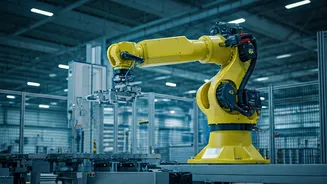The Office Pushback
The COVID-19 pandemic triggered a widespread adoption of remote work, fundamentally changing the way many Americans approach their jobs. As health concerns
have eased, many companies are now pushing for employees to return to the office. This shift is not universally welcomed. Many employees, accustomed to the flexibility of remote work, are resisting these mandates. Some companies emphasize collaboration and in-person interaction as justifications for bringing employees back. They highlight a belief that in-office work leads to greater productivity and stronger team cohesion. However, those advocating for remote work cite increased work-life balance and reduced commuting stress as key benefits, leading to a clash of perspectives shaping the future of work. The debate often centers on what is most productive, and what creates the best employee experience.
Gender Pay Gap Concerns
A significant concern related to the return-to-office trend is the potential widening of the gender pay gap. The flexibility of remote work has particularly benefited women, allowing them to balance work responsibilities with family caregiving duties more easily. The requirement to return to the office may disproportionately affect women who have caregiving responsibilities, making it harder for them to work the same hours as colleagues without such obligations. This situation could lead to career stagnation for women, limiting their ability to advance or earn equal pay compared to male colleagues who may face fewer constraints. It is believed that the requirement to be present at the office more often may limit their options, leading to decreased pay or limited job opportunities overall, which could significantly impact career progress.
Employer Motivations Examined
Employers are citing various reasons for mandating a return to the office, including the need to maintain company culture and foster a sense of community. Some companies believe that in-person collaboration leads to greater innovation and faster decision-making. There is the argument that informal interactions in the office setting facilitate better communication and relationship-building, which is essential to the workplace. From the employers' point of view, physical presence is also believed to improve employee supervision and accountability, ensuring work standards are met and making it easier to manage employees effectively. However, the exact level of productivity improvement for employers, versus remote work, remains controversial, with many factors influencing the actual outcome, and the best way to manage those factors varies widely by business and by employee.
Employee Resistance Factors
Resistance to returning to the office stems from various employee preferences and experiences during the remote work period. Many employees have come to appreciate the increased flexibility, which allows for better work-life balance. This flexibility is very important, as it facilitates the juggling of personal and professional commitments, and gives employees more control over their daily schedules. The reduction in commuting time and costs is another significant factor driving resistance. The time and money saved by not commuting can be substantial, resulting in employees having more free time for family and personal interests. Furthermore, many employees have invested in setting up comfortable and efficient home offices, making the return to the office a less appealing proposition. This change makes their home life more attractive, thus more employees would prefer a hybrid or fully remote work model.
Hybrid Work Models
The rise of hybrid work models represents a compromise between fully in-office and fully remote setups. Hybrid approaches offer employees the flexibility of working from home some days and coming into the office on others. This allows companies to address concerns about collaboration and culture while still offering employees the flexibility they desire. The success of hybrid models depends on clear communication and equitable treatment of all employees, regardless of location. It is important to create the same opportunities for engagement and advancement for those who are fully in-office versus those working at a distance. As companies experiment with various hybrid structures, it's believed that they'll seek the right balance between in-person interactions and remote work benefits. This may also influence real estate demand and the overall character of urban centers.
The Long-Term Outlook
The debate over remote work versus in-office work is likely to continue evolving, with the long-term impacts still unfolding. The ongoing discussion between employers and employees indicates the need for flexibility and adaptability in the workplace. The future may involve a diverse mix of work arrangements that suit the particular needs of different industries, companies, and employees. Organizations that prioritize employee well-being and provide opportunities for flexibility may gain a competitive advantage in attracting and retaining talent. The integration of technology in the workplace will also play an increasingly important role, improving both collaboration and remote communication. As the job market evolves, it will be interesting to track the changes as the needs of both employers and employees shift, which will further shape the future of work.










